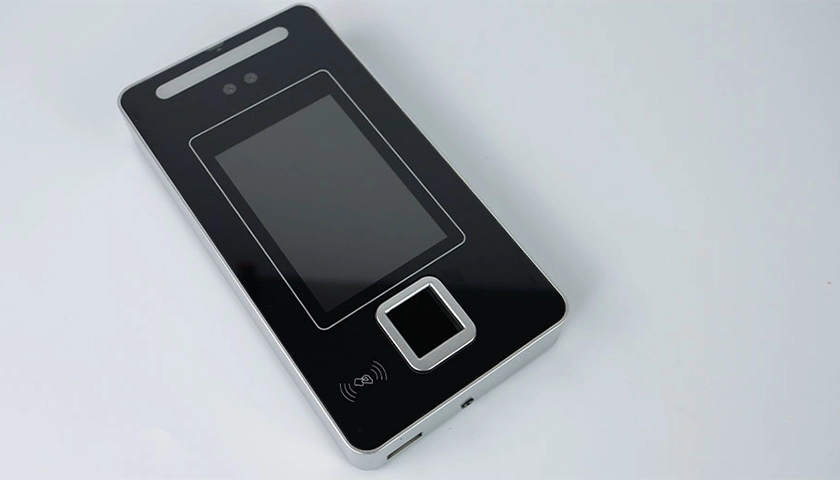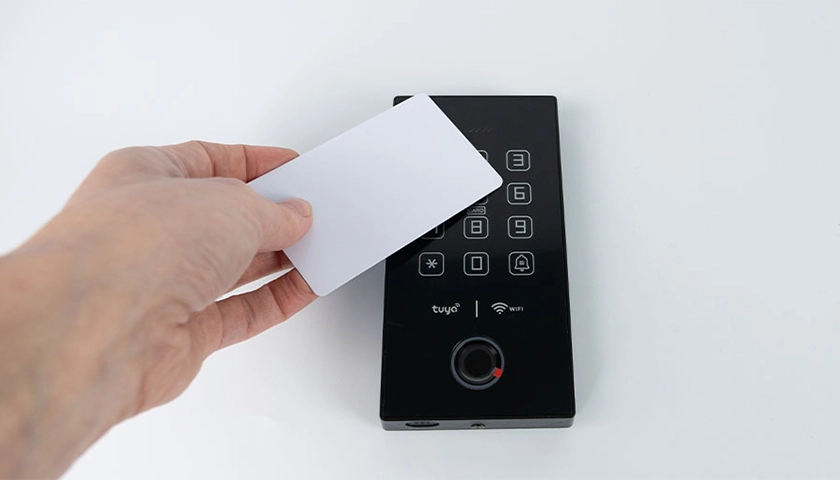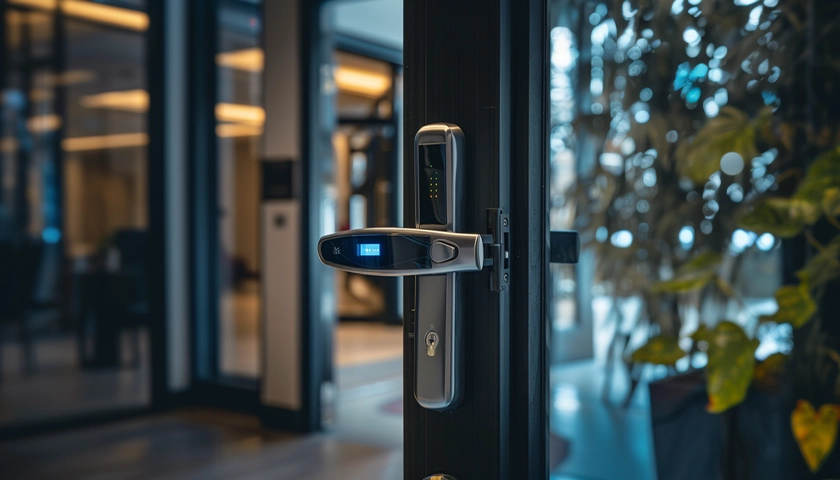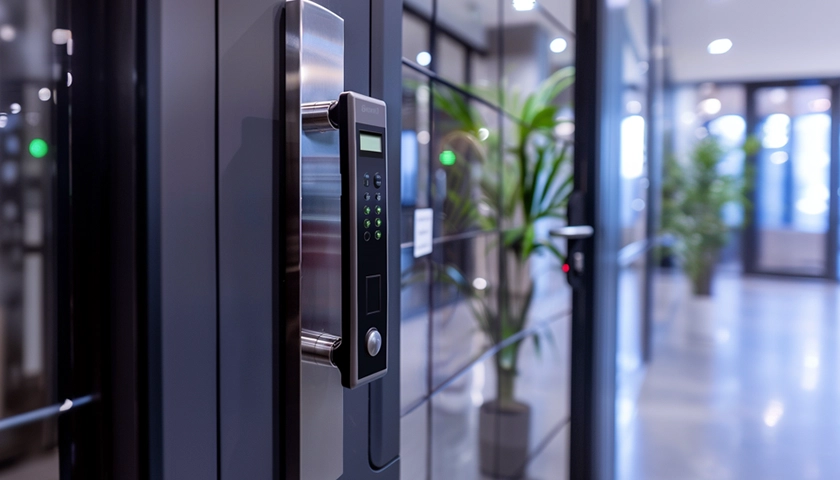In an era of increasing digitization and increased emphasis on the security of both personal and corporate data, access control systems have become an essential security feature in every modern organization. In a world where security threats are evolving as quickly as technology, the ability to protect valuable physical and digital assets is more critical than ever. Access control not only prevents unauthorized access, but also enables monitoring and management of the flow of people and information within an organization. In this way, access control systems are a key tool in protecting privacy, intellectual assets and ensuring compliance with ever-new data protection regulations. This blog post aims to explore why properly designed and implemented access control systems are so important in today’s world, both in private and professional spaces.
Access control systems - what are they?
Access control systems are technologies used to control and manage access to facilities and premises. Their main task is to guarantee access to specific resources, rooms or buildings, only to authorized persons. Access control devices provide high security and protect company resources or private property.
Access control systems consist of a variety of devices ranging from simple electronic locks to advanced biometric solutions. They can be managed locally or remotely and offer the possibility of connecting to other security systems.
Access control systems are used in many places, including buildings, rooms or outdoor areas. They offer a variety of methods for opening doors, such as, a unique password, RFID card, fingerprint or facial recognition system.

What access control systems are used for
First and foremost, access control systems are designed to protect against unauthorized access, keeping property, resources and information from falling into the wrong hands. They provide security in places such as companies, schools, laboratories, institutions, banks, etc., where access control plays a key role. However, access control devices are increasingly used in private homes or multi-family buildings, providing a sense of security for residents.
Modern access control systems can also monitor and record the hours of entry and exit from a building, so they can additionally be used to record employees’ working hours.

How do we gain access to a building or room?
There is a wide range of devices available on the market for controlling and managing access to facilities or rooms. Available systems differ in methods of authorization and granting access. Depending on the specific model, an access control system may offer multiple verification methods or focus on a single method.
Methods of access to premises and buildings:
- Access control based on badges: The most common is the use of magnetic cards or RFID cards with a specific frequency. Proximity cards are applied to a location marked on the reader, and when the device reads the information, access is granted.
- Biometric access control: Uses unique physical characteristics, such as fingerprints, facial geometry, or iris scans, which provides a very high level of security due to the uniqueness of human characteristics. This type of authorization is especially recommended for laboratories, banks or government institutions where sensitive data and resources require the highest level of security.
- Access control by access codes: each user can be assigned an individual password consisting of digits. The user, wishing to gain access to a building or room, enters the password using the keypad on the device. This is the simplest method of authorization, but very often used.
- Systems based on smart home technology: devices that work with smart appliance applications, allowing remote access management and configuration from a smartphone.

What devices can make up an access control system?
Access control systems are a variety of devices that provide asset protection in commercial facilities, such as offices, offices, institutions, businesses, and private facilities, such as homes and apartments. An access control system may consist of several devices, differing in function, methods of authorization, as well as in method of operation and place of installation.
Access control readers
Access control readers are compact devices that, depending on the model, allow access by reading RFID card data, biometric fingerprint scan, facial identification or entering a unique password via a keypad. They provide security by granting access to individual zones, only to those authorized to enter. A large number of users can be registered in their internal memory, which makes them often used in all kinds of companies. It is also possible to manage the users in the database, making it possible, for example, to delete a user.
Electronic and electromagnetic locks
Electronic locks are devices designed to be installed in or on doors that control access to rooms and buildings, through the use of electronics. When connected to a power supply, they provide high security and protect the building from unauthorized entry.
They can be integrated with external RFID card readers, biometric fingerprint scanners, facial recognition systems, or password entry keypads. This allows the user to open the door using their preferred authorization method, without having to use a traditional key.
There are two types of locks for controlling access to buildings and rooms.
The electronic lock, works on the principle of an electrical mechanism to lock or unlock access. Once connected to certain devices, it can be controlled by various authorization methods, such as PIN codes, access cards, biometric solutions or mobile apps.
The mechanism of operation of this type of locks is based on activation of an electrical locking device, which responds to an appropriate signal from the authorization system – for example, entering the appropriate code or applying an authorized card. These locks are usually powered by a constant source of electricity.
Electronic locks are often part of a broader access control system and can work in conjunction with alarm systems, monitoring, remote access management applications and other security devices, such as proximity card readers, biometric scanners or password entry keypads.
An electromagnetic lock, often called an electromagnet for doors, works on the principle of electromagnetism. It is made up of an electromagnet and a metal plate. When the electromagnet receives power, it attracts the metal plate, which has the effect of holding the door in the closed position. The force of the magnet is so strong that without using a specific authorization method, we are unable to open the door.
The mechanism of these locks is to generate a strong magnetic field when they are connected to an electrical source. This magnetic field attracts a metal plate placed on the door, effectively preventing it from being opened. Interrupting the power supply causes the magnetic field to disappear and allows the door to be opened. It is also possible to unlock the door through various authorization methods, such as RFID cards, access codes or biometrics, thanks to integration with access control systems.
Electronic handles
These are advanced, intelligent devices designed for installation in exterior or interior doors that provide protection and security. They can allow access through the use of an RFID card, password or fingerprint scan. In addition, some models can work with mobile apps that, when installed on a smartphone, allow remote management of the door – opening, closing and configuration from anywhere. Power is most often provided by batteries, but some models offer the possibility of connecting to a permanent power source. Electronic door handles are designed to provide an advanced level of protection. That’s why they are often equipped with tamper alarms and systems to prevent unauthorized entry attempts.
In addition to the access control systems mentioned above, we can also distinguish:
- Electronic turnstiles: Often used in high-traffic areas such as subway stations and entrances to office buildings.
- Smartphone-based identification systems: These devices use technologies such as Bluetooth or NFC to identify users and manage access through mobile applications.
- Access control terminals: These are central management units that monitor and control the operation of the various components of the access control system.
- Intercom systems: Allow audio-visual or voice communication between the person seeking access and the person who can authorize that access. Thus, these are all kinds of intercoms that we often encounter in multi-family residential buildings.
Each of these devices can be used alone or in combination with others to create complex systems tailored to the specific needs of a facility or organization.

Why invest in an access control system?
Access control systems offer many advantages for both small and large organizations, as well as for private users. Here are some of the main advantages of using such systems:
- Enhanced security: access control systems effectively protect facilities from unauthorized access by restricting access to buildings, specific rooms or digital assets to authorized individuals only.
- Flexibility in privilege management: With access control systems, access privileges can be easily and quickly changed, granted or revoked, which is especially useful in rapidly changing corporate environments.
- Ensuring regulatory compliance: These systems help organizations maintain compliance with data privacy and security regulations by automating many monitoring and reporting processes.
- Ability to integrate with other security systems: Access control systems can be integrated with video surveillance systems, burglar alarms or building management systems to create a comprehensive security solution.
- Reducing costs and resources: Replacing traditional locks and keys with systems based on access cards or biometrics reduces costs associated with replacing locks or making new keys after loss or theft.
- Increased control and monitoring: These systems enable real-time monitoring of who, when and where access was gained, which is crucial for security and workflow analysis and optimization.
- Support for remote management: modern access control systems offer remote management functionality, allowing system administrators to manage permissions and monitor events from anywhere, anytime.
- Improving operational efficiency: Automating the access control process can significantly increase operational efficiency, minimizing delays in accessing facilities or information and reducing the burden on security personnel.
- Personalization and scalability: access control systems allow you to customize access levels to meet individual user needs and scale the system as your business grows or your organizational structure changes.
Each of these advantages makes access control systems not only practical, but even necessary in the modern world, where managing and protecting assets is becoming increasingly complex and crucial.
Did you know that...
- The first access control mechanisms appeared as early as ancient Egypt and Babylon, where mechanical locks were used. These locks were constructed of wood and used mainly to secure doors.
- The first commercial application of biometric systems took place in the 1970s. Initially, they were used mainly in government and military security, and fingerprint recognition was one of the first technologies used.
- Electromagnetic locks - While they may seem like a modern invention, the first patent for an electromagnetic door lock was registered as early as 1911 by Samuel Segal.
- The 1996 Olympic Games in Atlanta saw the first large-scale use of biometric access control systems to secure sports grounds.
- Access control systems are finding applications even in space stations. The International Space Station uses advanced access control technologies to manage access to various sections of the station.
One control system - several devices
Most access control devices can operate independently, but to enhance security and create an advanced access control system, some devices can be combined so that they work together. Here’s a look at what devices can be combined to create an effective and secure access control system:
- RFID, biometric and password card readers – These devices can work with electronic and electromagnetic door locks, allowing access via RFID card, fingerprint, facial scan or password entry on a keypad. In addition, they can also be linked to the time-of-day recorder inside, if both devices have a Wiegand interface, so that data on the time of entry and exit from the building, is sent directly to the time-of-day recorder.
- Intercom systems – Video and audio intercoms can be linked to electronic gates or doors, allowing communication between those wishing to gain access and those inside the building.
- Electronic door locks – Can be controlled remotely using access management systems that integrate various authentication methods such as cards, PIN codes, or biometrics.
- Intelligent electronic door handles – some electronic door handles work with smart device apps, so that when connected to your phone, you gain remote access and configuration.
Integrating these various devices into a single system makes it possible to create secure and effective access control that is flexible and tailored to the specific needs of the user.

Summary
Access control systems are a key component of security strategies for many organizations. Their variety and customization to meet the specific needs of users allow them to effectively manage the risk of unauthorized access to physical and digital assets. Depending on your needs and the nature of your business, you can choose the right type of access control system to best protect your valuable assets from unauthorized access.
![Differences between laser chip and CCD and CMOS matrix [2024]](https://hdwrglobal.b-cdn.net/wp-content/uploads/2024/05/transparent-thegem-product-justified-landscape-s.png)













